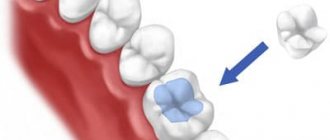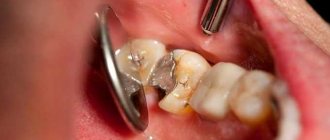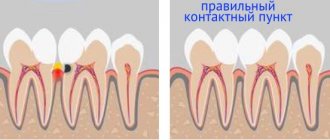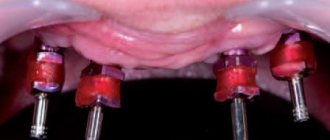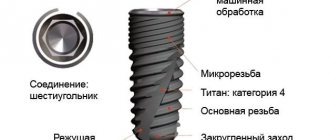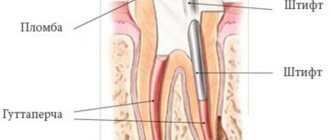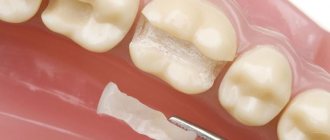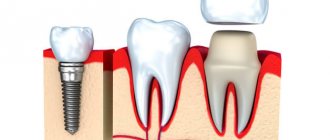Diana Levchuk. Founder and chief physician of aesthetic dentistry Deva-Dent. The doctor is an orthopedic dentist specializing in aesthetic treatment and prosthetics. Has 15 years of experience in therapeutic and orthopedic dentistry.
The reason for writing this article was a question that is often asked, especially from the regions of Russia:
“The clinic advised me to get a paid light filling, but how is it better than the usual free one?”
In such a situation, most patients agree to a “paid” or more expensive filling. However, having already agreed, such a patient has little idea what it is and what he has to overpay for. But the price of a light-curing filling can also be different and sometimes differ significantly!
Well, let’s try to “put everything into pieces.”
How is a light seal different from a regular one?
In fact, the term “light filling” is more popular among the people, but experts usually use other names: photopolymer, light-curing, heliopolymer are the most common of them. A light filling is a fairly plastic material, and thanks to ultraviolet light it is much easier for a specialist to carry out a filling. This is the main difference between a light filling and a regular one. In addition, you can choose many colors and shades for a light filling, which is why it is so often used in the treatment and restoration of teeth in the smile area. In short, the main advantages of a light filling are reliability, durability and high aesthetics. These qualities make light-based dental fillings one of the most sought after in the dental market.
Tooth restoration with a ceramic inlay.
The inlay is a microprosthetic tooth. In the process of restoring teeth with a ceramic inlay, the treatment process itself is faster. This is especially true if several teeth are subject to such treatment. The doctor prepares the cavity of a tooth (or several), takes impressions (molds) and installs a temporary filling. The impressions are sent to the dental laboratory, where a technician makes the inlay with perfect precision. At the next appointment, the specialist removes the temporary filling and installs the finished inlay into the tooth cavity using a special adhesive material. There is no need to sit in a chair with your mouth open for a long time, as is the case with layer-by-layer fillings. If we are talking about several teeth, then the filling process will have to be extended over several visits. In the situation with inlays, this can be resolved in 2 visits to the doctor.
| Advantages of a ceramic inlay over a filling. |
|
|
|
|
|
|
|
|
|
|
| Disadvantages of ceramic inlays. |
|
|
Contraindications for installing a tab.
Despite all the advantages, there are a couple of points in which this microprosthetics is impossible:
- The tooth is more than half destroyed. If, after treating the affected surfaces, very little tooth tissue remains, then it is recommended to install a crown on the tooth.
- If the development of caries occurs in a very hard-to-reach place, in this case a filling is installed.
As can be seen from the comparison tables, inlays have virtually no disadvantages compared to fillings.
Free consultation
Startsmile experts - leading dentists in Moscow
The doctors at our aesthetic dentistry center SDent are among the leading specialists in the field of dentistry throughout Moscow.
More details
Composition of the light seal
The vast majority of filling types are based on the use of a mixture of several materials. A filling made from a light-curing composite has a rather complex composition, which is partly why it costs more than its analogues.
Light seal materials
- Heliocomposite.
The basis of a light filling, which under the influence of an ultraviolet lamp breaks down into radicals, due to which polymerization (hardening) of the filling material occurs. - Filler.
This can be silicon dioxide, glass ceramics, etc. The structure, color and area of application of the filling depend on the type of filler. - Connecting elements.
Reviews from patients and dentists
Dentists have different opinions about various fillings, but they agree that it is not so much the material that is important, but the quality of the installation. A cement filling installed in free dentistry can last more than twenty years, provided that the procedure is carried out competently and in compliance with all technologies. At the same time, a filling made from an expensive photopolymer, if installed incorrectly, can fall out of the tooth in just a couple of weeks. Experts advise paying attention first of all to the doctor who will perform the procedure and his level of professionalism.
Category Dental filling Posted by Mister stomatolog
Types of light seals
Some sources indicate that only anterior teeth can be restored using light-curing composite fillings, but this is incorrect information. Today, such filling is successfully used in all departments, except for the most inaccessible places (for example, “wisdom teeth”). All types of light fillings differ in the composition of the filler, which determines their characteristics.
| Light fillings for teeth | Description | Application area |
| Macro-filled light fillings (light fillings for chewing teeth) | The filler consists of solid large particles (macrophiles). They give the filling strength, but have a rough surface and tend to lose color. | Macrophilic light fillings are usually used on posterior teeth or on the inside of the dentition, where aesthetics are less important. |
| Microfilled light fillings (light fillings for front teeth) | Fillers consisting of small particles. They hold color well, can be polished, but are very fragile. | Mostly used in the smile area. |
| Nanohybrid | They consist of ultra-fine particles that are both durable and aesthetic. | Universal light fillings that can be used in all types of restorations. |
Restoring a tooth with a filling.
When the area of damage to the tooth is small, the filling copes with its task perfectly. The doctor removes the affected areas of enamel and dentin, treats the surface and then begins filling the cavity. Fillings are different, depending on the material used. At Es-Dent Center we use only modern light-curing materials, which are the most aesthetically pleasing, durable and absolutely harmless to the human body. We will talk about the advantages and disadvantages of just such fillings.
| Positive aspects of restoring a tooth with a filling |
|
|
|
|
|
| Disadvantages of fillings |
|
|
|
|
|
|
|
|
|
Yana Dmitrievna Mitskevich
Dentist, therapist
13
years of experience
All types of therapeutic treatment, including endodontic treatment using a microscope, microprosthetics, hygienic procedures of any degree of complexity.
Make an appointment
Installation of a light seal
Today, a light filling can be installed in almost any clinic. Installation has approximately the same number of steps as in the case of other types of fillings (with the exception of scanning with an ultraviolet lamp).
- Initial consultation, panoramic x-ray.
- Anesthesia.
- Preparation of damaged tooth tissues. During depulpation, the canals are treated and a temporary filling is installed.
- Placing a light filling (filling the area with filling material and giving it a primary shape).
- Polymerization of the filling under the influence of ultraviolet light.
- Grinding and finishing of the filling to achieve optimal shape and correct occlusal contact.
If after filling with a light filling your tooth hurts for more than three days or you feel discomfort when closing your jaws, contact your doctor as soon as possible. Find a trusted clinic where you can get a filling in Moscow on Startsmile.ru in the “Search for dentists” section
Questions and answers
How long does the procedure take?
It all depends on the depth of the caries lesion and the material the doctor uses. The filling installation period lasts from 20 minutes to 1 hour. Before starting treatment, discuss the timing of the procedure with your doctor.
What fillings are installed in free clinics under compulsory medical insurance?
The recommendations for payment for treatment under the policy indicate that light and chemical fillings can be installed free of charge. Therefore, it is necessary to discuss in advance with a specialist which filling material is included in the insurance list.
Which filling is better: light or chemical?
The light filling is simple and painless to attach. Photopolymers do not emit toxins, so the light filling is suitable for installation even by pregnant women. Light polymers are invisible on the tooth after restoration.
Which filling is best suited for a crown?
Most often, the dentist chooses a filling for the crown after assessing the condition of the tooth. For thin and fragile fabrics, light-curing and photopolymers are used, which will adhere tightly and prevent the walls from cracking. If the crown is attached to pins, then composites and glass ionomer cements can also be used.
Pain after filling?
During treatment, the patient is under anesthesia. Feeling the effects of a painful intervention after the painkillers wear off is acceptable.
What to do:
- ask your dentist what medications to take in case of pain;
- try to avoid putting stress on the treated tooth until the sensitivity goes away.
- exclude sour, sweet and hard foods from the diet;
- maintain oral hygiene
In case of intense pulsations, fever, headache and inflammation, you should return to the dentist.
How much does it cost to install a light seal?
In order to most accurately tell you how much it costs to get a light filling, you need to understand what type of filling will be installed, as well as where exactly the treatment will take place. The cost of a light filling in a state clinic starts from 900 rubles. As a rule, this is a medium quality composite material intended for the restoration of chewing teeth. In private dental clinics in Moscow, the price of a light filling starts from 1,500 – 2,000 rubles. Light fillings for front teeth are more expensive: for aesthetic restorations, the price can exceed 3,000 rubles.
What products should you be careful with?
How soon can you eat after installing a reflective filling? There is no definite answer. But regarding the food consumed, experts agree. Thus, it is recommended to exclude coloring products for 2–3 days after a light filling. Ingestion of foods, including drinks, containing dyes may affect the color of the composite, since the filling is still highly permeable.
After restoring teeth with a light filling, it is better to avoid the following foods for at least two days:
- coffee;
- beet;
- carrot;
- blueberry;
- carbonated drinks;
- chocolate and cocoa.
In small quantities you can use:
- black tea;
- strawberry;
- cherries;
- natural juices.
Dentists pay special attention not only to when and what not to eat with a light filling, but also to the temperature of the food eaten. You should not eat too hot or cold foods, or eat them one after another or together. The temperature contrast can lead not only to damage to the filling, but also to damage to the tissues of a healthy and diseased tooth.

